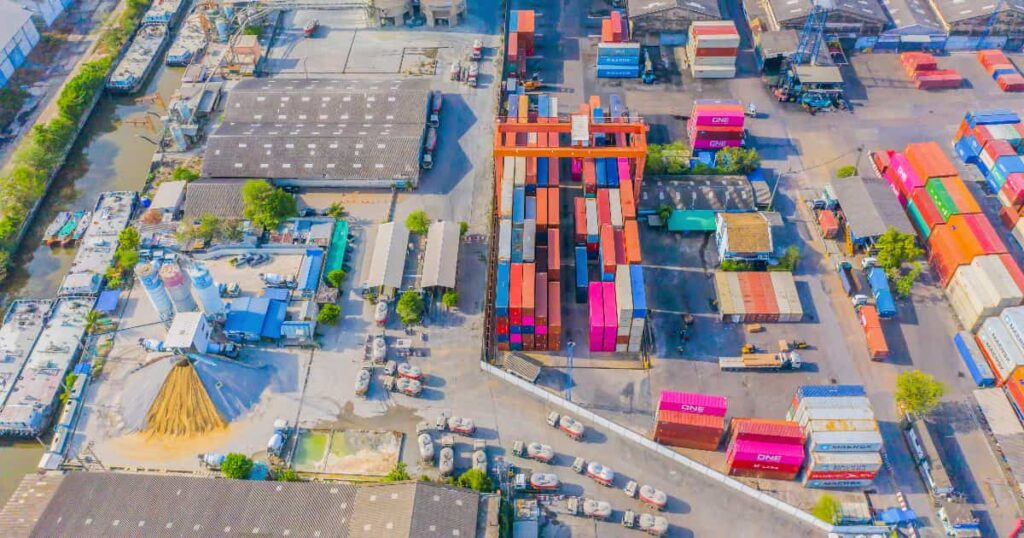A1 Quality Logistical Solutions
Key Highlights
- The logistics industry is rapidly evolving, driven by technological advancements, shifting customer expectations, and a growing emphasis on sustainability.
- Automation, artificial intelligence (AI), and blockchain are transforming logistics operations, leading to increased efficiency, transparency, and cost savings.
- Sustainability is no longer a buzzword but a core focus, with companies embracing green logistics practices and circular economy models.
- Customer-centricity is paramount, with personalized delivery options, real-time tracking, and enhanced transparency becoming the norm.
- The rise of e-commerce continues to reshape logistics, driving innovation in last-mile delivery and fulfillment solutions.
Introduction
New technology, changing customer needs, and more complicated global supply chains are reshaping logistics operations. Companies are looking for fresh ideas to improve their inventory management, boost efficiency, and keep up with the rising demands of the digital world.
Understanding the Logistics Landscape in 2025
The logistics scene in 2025 is changing due to several factors that affect how products are transported globally. Technology plays an important role, sustainability is crucial, and customer expectations are at an all-time high. To succeed in this setting, companies must be quick, flexible, and creative.
To stay ahead, businesses must use new technologies, adopt eco-friendly methods, and aim for smooth and customized customer experiences. Being able to predict and react to these trends is key for logistics companies to keep a competitive edge in the future.
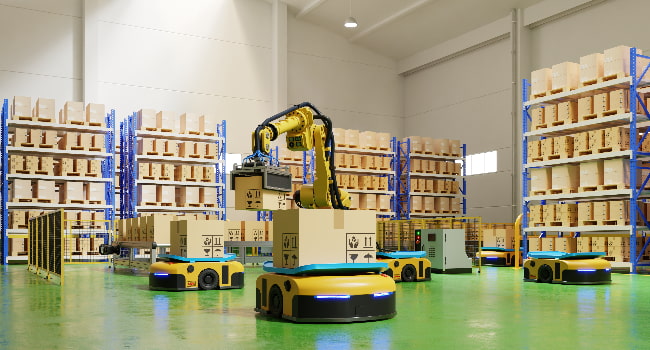
The Evolution of Logistics: From Past to Future
Within logistics, we started with manual work and paper tracking. Now, we have advanced systems for managing supply chains using digital tools. Logistics services have become smarter, helping businesses gain clear visibility and control over their supply chain operations.
In the past, many viewed logistics as just a cost. It was seen as a hidden function of businesses. Today, however, it is seen as important for gaining an advantage. Good logistics can improve customer satisfaction, enhance brand reputation, and help the bottom line. Looking forward, the future of logistics will depend even more on new technologies and data to increase efficiency, lower costs, and meet the changing needs of the marketplace.
As technology grows, the logistics industry will also change. New ideas like predictive analytics, self-driving vehicles, and smart warehouses are now becoming real. Logistics companies that adopt these innovations will lead the way to success in the coming years.
Key Factors Driving Change in the Logistics Industry
New tools like artificial intelligence, machine learning, the Internet of Things, and blockchain are helping to automate tasks. These technologies make processes easier and more efficient. Using these tools well will be key for logistics companies to stay competitive.
At the same time, what customers expect is changing fast. Shoppers want quicker delivery, more transparency, and a smooth online experience. To meet these needs, logistics providers have to move quickly. They need to invest in new ideas and focus more on what the customer wants.
Sustainability is also becoming very important in the industry. Companies face pressure from customers, investors, and regulators to reduce their harm to the environment. This has led to a greater demand for green logistics solutions, like electric vehicles, better routing, and eco-friendly packaging choices.
The Beginner's Guide to Navigating Logistics Trends
Navigating the fast-changing world of logistics can be scary, especially for beginners. But by learning the main trends and how they might affect you, businesses can prepare themselves well and stand out from the competition.
This guide will share important information, useful tips, and insights on the newest logistics trends. You will feel more confident in making smart choices and improving your supply chain operations. Let’s start this journey to discover the exciting chances and challenges in the world of modern logistics.
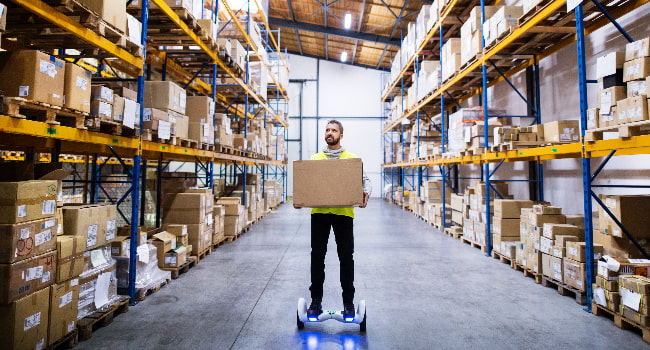
Essential Knowledge and Tools for Getting Started
Order fulfillment involves receiving, processing orders, picking, packing, and shipping. Each step must be managed closely to ensure deliveries are timely and accurate. Working with a reliable service provider can make this process much smoother.
Transportation management is another key part of logistics. It is vital to choose the best shipping methods, manage relationships with carriers, and track shipments in real time. This helps cut costs and keeps deliveries on schedule. Putting money into a good transportation management system (TMS) can improve visibility and optimize routing. This leads to great cost savings.
Staying updated on new industry trends and technologies is also important. Going to industry events, reading trade publications, and connecting with logistics experts can give you valuable insights. These can help you see ways to improve your own operations.
Identifying Opportunities and Challenges in Modern Logistics
Modern logistics offers both great chances and some tough challenges for businesses. First, technology provides new ways to keep customers happy, save money, and work more efficiently. Companies can use data analysis to make their supply chains better, cut shipping costs, and speed up delivery times. This can make customers happier.
But, these chances also come with challenges. The fast changes in technology mean businesses must keep adapting and investing. To stay ahead, they need to be flexible, ready to try new things, and open to new ideas.
Another challenge is the growing complexity of global trade. Changing tariffs, trade disputes, and political issues can upset supply chains and create worries. Logistics companies must be ready to handle these challenges. They need to change their sourcing plans and build strong supply chains that can cope with unexpected problems.
Step-by-Step Guide to Leveraging Emerging Trends
You need a smart plan and a clear approach to keep your logistics operations flexible, efficient, and ready for the future.
By dividing the process into smaller steps, you can easily adopt new technologies, use eco-friendly methods, and improve your logistics operations overall.
Step 1: Embrace Technology and Innovation
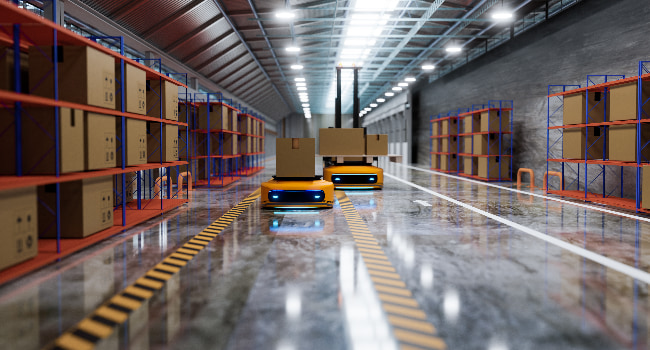
Logistics companies that do not use new technologies may fall behind their rivals and lose market share. It’s smart to invest in a strong warehouse management system (WMS). This can improve warehouse operations, boost inventory management, and make key tasks automated.
Working with a modern logistics provider that welcomes innovation can really help you stand out. Find providers who use the latest tools, like AI for route planning, predictive analytics, and live tracking options. By using the knowledge and technology of a good logistics partner, you can focus on your core business better.
Keep in mind that innovation never stops. Stay updated on the latest tech changes and the best practices in the industry. Create a work culture that supports innovation and encourages your team to think of new ideas and solutions.
Step 2: Adopt Sustainable Practices
Shoppers care more about the environment and expect the companies they choose to be responsible. By using green logistics, you can connect your business to these values and even help your profits.
You can save money and support the planet by using sustainable practices. For example, make delivery routes more efficient to save fuel and reduce emissions. You might also switch to electric or alternative fuel vehicles and choose eco-friendly packaging.
Think about teaming up with suppliers and logistics companies that also care about sustainability. By partnering, you can build a more responsible supply chain from start to finish.
Step 3: Focus on Customer Experience Enhancements
Customers now want fast, trusted, and personalized services. Logistics can help address these needs.
Offer flexible delivery choices. This could include same-day or next-day delivery to meet different customer wants. Use real-time tracking systems. This way, customers can see where their orders are during delivery. Make sure to have helpful customer support channels. This lets customers easily track orders, fix problems, and get updates quickly.
By putting money into technology that helps with clarity and personalization, you can change your logistics operations. This way, you go from being just a cost center to something that sets you apart from competition. It can help drive customer loyalty and bring satisfaction.
Step 4: Integrate Advanced Analytics for Decision Making

The logistics industry produces a lot of data. When this data is analyzed correctly, it can help improve operations and lead to better decisions. Using advanced analytics can give businesses a clearer view of their supply chain. This helps find and fix problems while also predicting future trends.
You should use data analytics tools to keep an eye on important performance indicators (KPIs). These include order cycle times, shipping costs, and inventory levels. Predictive analytics can help you understand changes in demand. This will help with better inventory management and allow you to change logistics plans as needed.
Additionally, use data visualization dashboards. These can show complex data in a simple way. This makes it easier for people involved to make quicker and smarter decisions.
Step 5: Collaborate for a More Resilient Supply Chain
To build a strong supply chain, you need good partnerships and teamwork among all the parties involved. Keep communication open with your suppliers, logistics teams, and other partners. Share information and work together to find any risks or weak spots.
Make joint plans to deal with any problems and keep your business running smoothly. When you work together and use each other’s strengths, you can create a supply chain that adapts well to surprises.
Also, regularly check and update your partnership strategies. This helps to keep them in line with your business goals and what is happening in the market.
Automation and AI: Transforming Logistics Operations
Automation and artificial intelligence (AI) are helping to increase efficiency, speed, and accuracy like never before. These technologies are improving workflows in many areas. This includes warehouse management, transportation, last-mile delivery, and customer service.
AI can analyze huge amounts of data, find trends, and make predictions. This allows logistics companies to make better decisions based on data. This helps them improve their operations and lower costs.
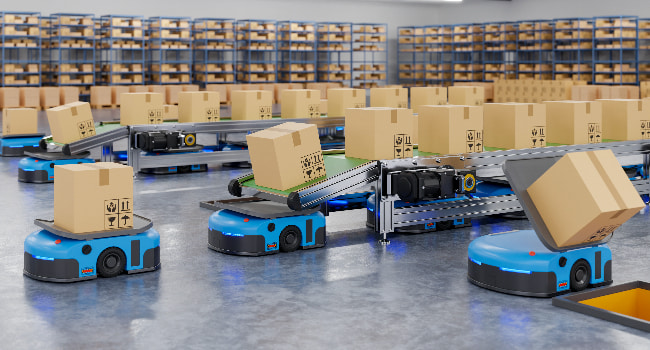
How Automation is Streamlining Warehouse Operations
Automated guided vehicles (AGVs), robotic arms, and automated storage and retrieval systems (AS/RS) are changing how warehouses work. These technologies automate tasks that are repetitive and need a lot of labor. This leads to higher efficiency, fewer mistakes, and better safety in the workplace. Warehouse automation makes it possible to work all day and night. This helps increase output and lower delivery times.
Also, automation allows workers to avoid boring jobs. They can then concentrate on more complicated tasks that need creativity and problem-solving skills.
As technology gets better, we will see more automation in warehouse operations. This will make efficiency and productivity even higher.
AI's Role in Optimizing Supply Chain Efficiency
Artificial intelligence (AI) is creating a new landscape for supply chain efficiency. AI systems can look at a lot of data from different sources. This includes things like past sales, weather, and traffic conditions. They can predict future demand and spot possible problems.
With this information, businesses can change their inventory levels ahead of time, choose better transportation routes, and reduce potential risks. Predictive analytics using AI is changing how companies run their supply chains. This leads to lower costs, faster delivery times, and better customer satisfaction.
Also, AI chatbots are improving customer service. They provide quick answers to questions, solve issues, and offer personal support. As AI technology grows, we will see more new ways to boost supply chain visibility, efficiency, and resilience.
Sustainability: A Core Trend in Future Logistics
Green Logistics: Moving Towards Eco-Friendly Practices
The use of eco-friendly practices is very important in green logistics. More companies are choosing new transportation methods. For example, they are using electric trucks and cargo bikes to cut down their carbon footprint. They are also working on better delivery routes and combining shipments. This helps lower fuel use and emissions.
Sustainable packaging is another key area. Businesses are looking into options that are biodegradable and reusable. This helps in reducing waste.
Additionally, reverse logistics is becoming more popular. This means managing how products are returned. Companies want to lower waste and support a circular economy. By making return processes better and finding ways to reuse or recycle returned items, companies can help create a more sustainable supply chain.

The Impact of Circular Economy on Logistics
The circular economy is impacting the old linear supply chain models. It focuses on using resources wisely, cutting down waste, and reusing products and materials. For the logistics industry, this change brings both challenges and new chances.
Logistics is key in making the circular economy work. It helps move products and materials throughout their entire lifespan. This means collecting products when they are no longer used, moving them to places for remanufacturing or recycling, and then getting them back into the market.
Adopting circular economy ideas helps the planet and businesses. Companies can save money by lowering waste disposal costs, finding cheaper recycled materials, and creating new income from remanufactured products.
Customer-Centric Approaches in Logistics
Logistics companies now aim to offer more than just moving items from one place to another. They can improve customer satisfaction by knowing what customers like, giving flexible delivery choices, and sharing clear and open communication. This helps businesses keep customers happy, build loyalty, and stay ahead of the competition.
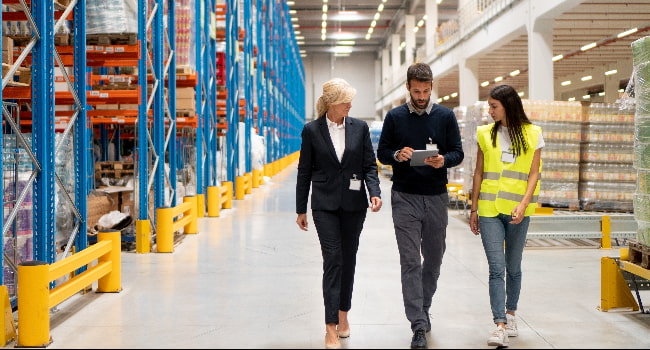
Personalization in Delivery Services
Customers no longer want to be just another order number. They want experiences that fit their needs. This means giving options like flexible delivery times, tracking their orders in real-time, and allowing them to change their delivery preferences easily.
AI systems help with personalization. They look at customer data, like previous orders and what people search for, to guess what they like and offer custom solutions. It’s important to keep customers informed too.
When businesses update customers about their order status, provide timely messages, and offer good customer service, they build trust. This trust makes customers happier with their delivery experience.
Enhancing Transparency Through Real-Time Tracking
Real-time tracking technology is changing how logistics works. It gives a clear view of where goods are at any moment. Customers can now see their orders from when they place them until they arrive at their home.
This new way of tracking gets rid of the guesswork while waiting for a package. It cuts down anxiety about delays and helps customers make better choices. Adding real-time tracking systems to your logistics operations makes customers happier and gives useful data. This data can help improve delivery routes, spot issues, and boost overall efficiency.
Also, having real-time visibility improves communication and teamwork among logistics providers, warehouses, and customers. This teamwork helps make the delivery process smoother and reduces chances of mistakes.
The Rise of E-commerce and Its Effects on Logistics
The rapid growth of e-commerce has greatly affected the logistics industry. It brings both chances and challenges. More people shopping online means there is a higher need for storage space, quicker delivery, and smart delivery options for the last part of the journey.
Logistics companies have had to adjust quickly to these new needs. They are putting money into new technology, broadening their networks, and coming up with clever ideas to meet the changing demands of e-commerce businesses.
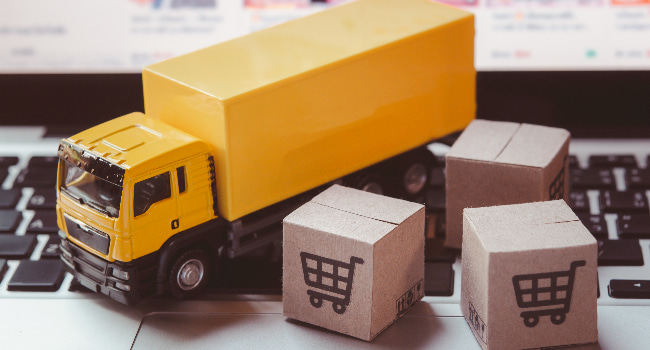
Adapting to the Surge in Online Shopping Demand
The rise of online shopping has created a big demand for e-commerce services. To meet this demand, logistics companies need to change their plans and improve their systems.
It’s important to build strong e-commerce fulfillment centers. These centers must be able to deal with many orders at once. This means they need to have a well-designed layout, use automated sorting systems, and make the picking and packing faster to make sure orders are processed quickly.
To meet the need for fast delivery, many e-commerce businesses are setting up urban fulfillment centers. These centers are closer to their customers and help lower the time it takes to deliver orders.
Last-Mile Delivery Innovations
Last-mile delivery is the last step in the delivery process. It is often the hardest and most costly part of logistics. This creates many challenges for online shopping businesses. To fix these problems, companies are looking for new ways to improve last-mile delivery. They want to make it more efficient, cheaper, and better for customer satisfaction.
Some of the new ideas include using drones and self-driving delivery robots. These can help deliver packages in hard-to-reach places or busy city areas. Also, there are crowdsourced delivery models. In this model, independent workers use their own cars to deliver packages. This gives companies more flexibility and saves money.
Additionally, smart lockers and pick-up points are becoming more popular. Customers can pick up their packages at a time that works for them. This offers a safe and flexible option instead of regular home deliveries.
Blockchain Technology: A Game Changer for Transparency
Blockchain technology is famous for its use in cryptocurrencies. Now, it is quickly becoming important in the logistics industry. This technology helps improve transparency, security, and efficiency in supply chains. Blockchain creates a secure and unchangeable record of transactions. This could change how we track, trace, and manage goods.
Blockchain improves how we handle documents. It also helps cut down on fraud and counterfeiting. Its uses in logistics are wide and impactful.

Securing Supply Chains with Blockchain
One strong use of blockchain technology in logistics is making the supply chain more secure. Blockchain records every transaction and moves goods on a shared and unchangeable ledger. This improves transparency and tracking, making it much harder for fake products to get into the supply chain.
This is very important for industries that deal with valuable items or strict rules, like pharmaceuticals and food products. The added transparency from blockchain builds trust among people involved since they can check the authenticity and source of products at every step of the supply chain.
Also, blockchain can make handling documents easier by automating the creation, checking, and transfer of documents such as bills of lading and customs statements. This helps reduce errors, speeds up the clearing process, and cuts down on disputes.
Facilitating Trust and Efficiency in Transactions
Blockchain technology builds trust and helps with efficiency in logistics. It creates a shared and secure record of all actions between people in the supply chain. This removes the need for middlemen like banks, making payments quicker and lowering transaction costs.
Smart contracts are agreements on the blockchain that can automatically manage payments. They release funds once delivery or contract terms are met. This speeds up payments, lowers disputes, and improves cash flow for everyone involved.
Additionally, blockchain offers a safe way to share data. This leads to better teamwork and clearer communication among partners. They can work together more smoothly and fix problems ahead of time.
The Integration of 5G in Logistics
The launch of 5G networks is set to provide faster, more reliable, and wider connectivity. With very low delays, high speed, and more capacity, 5G technology will help build new logistics solutions. These include things like real-time data analysis, self-driving vehicles, augmented reality tools, and smart warehouses.
Using 5G will help other new technologies grow as well. This will create a logistics system that is more efficient, quick to respond, and connected.
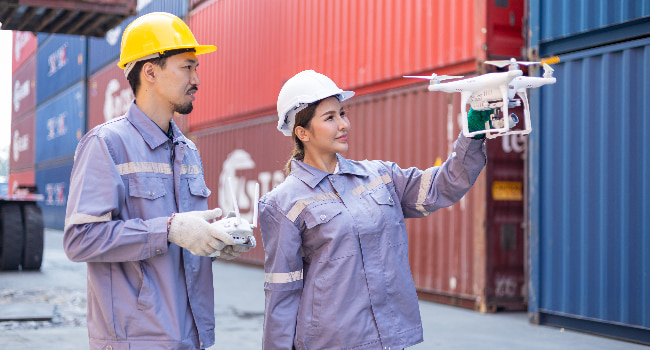
Accelerating Connectivity and Communication
5G technology is bringing super-fast speeds and very low delays. This will change how we communicate in the logistics world. It will make it easy for devices, vehicles, and people to connect, no matter where they are. With real-time data sharing, logistics managers can make smart decisions using the latest information.
The strong connection from 5G will help self-driving trucks and drones work well together. They will be able to talk to each other, the traffic systems, and the main control centers. This easy communication is important for keeping autonomous vehicles safe and working well, especially in busy places.
Also, 5G can handle more devices at once. This means that more sensors, cameras, and Internet of Things (IoT) devices in warehouses and transport networks can connect at the same time.
Enabling IoT and Smart Logistics Solutions
The mix of 5G technology and the Internet of Things (IoT) is making smart logistics solutions possible. These solutions help improve supply chain operations, boost efficiency, and lower costs. Sensors that are placed in vehicles, pallets, and other items can gather and send real-time data about location, temperature, humidity, and other important factors. This gives helpful insights into the status of goods and how well transportation networks are working.
Having this real-time data helps logistics managers make quick decisions. They can find better routes, change delivery times, and solve problems before they turn into big disruptions. Smart warehouses that have IoT sensors and automation can help with inventory management. They track goods better and speed up order fulfillment processes.
When logistics companies use these technologies, they can build a supply chain that is stronger, quicker to respond, and driven by data.
Global Trade Dynamics and Their Impact on Logistics
The changes within global trade comes from shifting politics, new trade deals, and changes in the economy. These factors bring both chances and challenges for the logistics industry. Businesses must keep up with the newest rules, agreements, and political events that can affect how they manage their supply chains.
It is important to create logistics systems that are strong and flexible. These systems need to adjust to new trade patterns and political situations. This helps reduce risks and keeps the business running smoothly.

Navigating International Regulations and Compliance
Navigating the tricky world of international rules is very important for businesses that trade globally. Logistics providers help companies follow the rules for imports and exports, customs steps, and paperwork needs. They make the movement of goods across borders easier and faster. It is key to stay updated on changes to trade laws, how tariffs work, and limits on imports. Doing this helps avoid delays, penalties, and problems in supply chains.
To improve compliance, businesses should set up strong programs and invest in technology that can automate paperwork and provide real-time updates on rule changes.
Also, teaming up with trusted customs brokers and logistics providers who know international trade rules well can help companies manage these challenges. This reduces mistakes and ensures smoother transactions across borders.
Building Cross-Border Partnership Strategies
Developing successful strategies for cross-border partnerships is crucial for businesses that want to grow in the global market. It helps to build strong ties with good logistics providers, customs brokers, and other important people in international trade. This can give useful information about local markets, rules, and cultural differences.
Working with local partners can help businesses deal with language barriers and understand local customs better. It also makes it easier to enter new markets.
To create a strong global network, businesses should do careful research, communicate openly, and focus on mutual benefits. When businesses build strong relationships, share information, and work together, they can grow their reach, become more competitive, and handle the challenges of global trade better.
The Future of Work in the Logistics Sector
As technology changes the logistics industry, the future of work will focus on new skills and changing job roles. Workers will need to be adaptable because of automation. Automation and AI will open up jobs for skilled workers in areas like data analytics, robotics engineering, and software development.
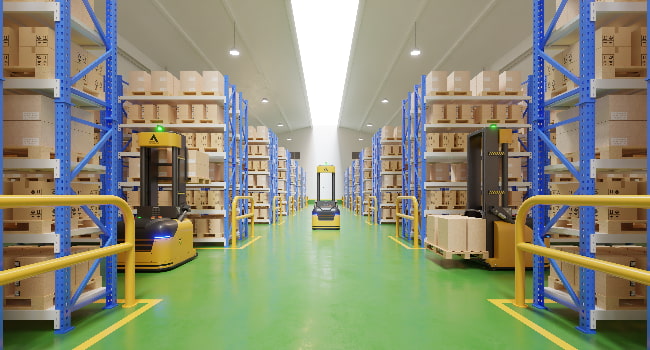
Skills and Roles Emerging in the New Landscape
Data analysis, robotics engineering, and software development are becoming more important. Companies are focusing on automation and digitalization.
People need to analyze large amounts of data to improve supply chain operations. They also need to develop and manage automated systems. Creating exciting logistics software solutions will be important too. To prepare for these new jobs, training programs should help build skills in areas like data science, AI, and robotics.
In addition, soft skills are still very important. Critical thinking, problem-solving, and good communication are needed for success in the changing logistics field. Adaptability and a desire to keep learning will also be key.
Adapting to Remote and Automated Work Environments
The growth of remote work and automation is evolving the usual workplace in logistics. Companies are now using digital tools, leading to new remote work roles in areas like supply chain planning, data analysis, and customer support.
Automation is taking over routine tasks with software and robots. This shift means workers must learn to use new technologies and get new skills. To improve operational efficiency in this changing work setting, companies should invest in strong digital systems, protect their sensitive data with cybersecurity, and create training programs to upgrade their team’s skills.
It is also important to build a work culture that is flexible and supportive. This culture should embrace remote work while encouraging teamwork and communication. Doing this can help attract and keep the best talent in the logistics sector.
Conclusion
In conclusion, the logistics industry will change a lot throughout 2025. Technology, sustainability, and a focus on customers are driving these changes. By using automation, AI, and blockchain, companies can improve their operational efficiency and make their processes clearer.
To succeed, businesses must adapt to e-commerce growth and use 5G technology for better connections. Companies should prioritize sustainable practices and improve customer experience. They also need to understand global trade dynamics.
By keeping up with new trends and using innovative solutions, they can handle challenges and seize opportunities in logistics. There are many exciting advancements coming for those who are ready to accept change.
Frequently Asked Questions
What Are the Biggest Challenges Facing the Logistics Industry in 2025?
The logistics industry in 2025 will face challenges. It needs to balance cost savings with operational efficiency. Rising fuel costs and global uncertainties add to these challenges. Future planning will require careful navigation of these issues. At the same time, there is a growing demand for faster and more sustainable deliveries.
his lets companies focus on their core competencies instead of handling logistical issues. As a result, businesses can use their resources better and grow strategically.
How Can Companies Prepare for the Shift Towards Sustainability?
Companies can create a sustainable business model by using eco-friendly practices in their supply chain management. This means they can use green logistics solutions, plan better transportation routes, and choose sustainable packaging options.
What Role Does Customer Experience Play in Logistics?
Customer experience is very important in logistics. Good logistics operations affect customer satisfaction and how people see a brand. By focusing on service quality, being open, and communicating well, companies can improve the overall customer experience.

Haley serves as the Marketing Manager for A1 Quality Logistical Solutions. She joined A1QLS in 2023 with her prior experience gained with GXO and XPO Logistics.

